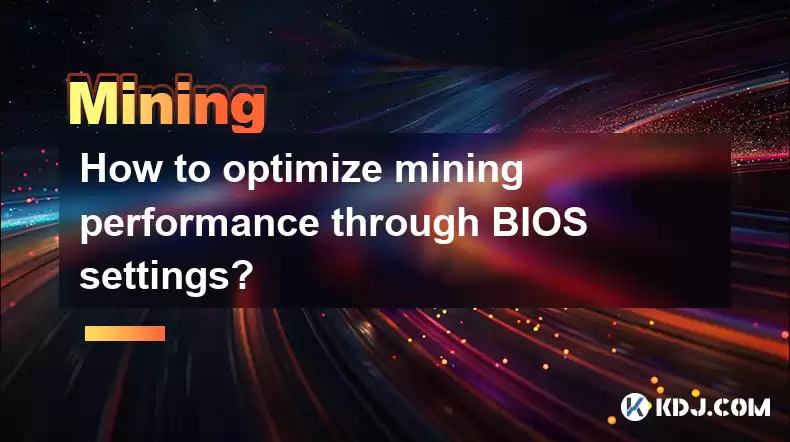-
 Bitcoin
Bitcoin $114500
-0.31% -
 Ethereum
Ethereum $3648
1.11% -
 XRP
XRP $3.033
-0.27% -
 Tether USDt
Tether USDt $0.9999
-0.01% -
 BNB
BNB $758.5
-0.32% -
 Solana
Solana $167.5
1.48% -
 USDC
USDC $0.9998
-0.02% -
 TRON
TRON $0.3331
0.74% -
 Dogecoin
Dogecoin $0.2039
0.25% -
 Cardano
Cardano $0.7419
-0.46% -
 Hyperliquid
Hyperliquid $39.21
2.66% -
 Stellar
Stellar $0.4049
-1.95% -
 Sui
Sui $3.483
-0.56% -
 Bitcoin Cash
Bitcoin Cash $570.8
2.89% -
 Chainlink
Chainlink $16.67
-0.57% -
 Hedera
Hedera $0.2470
-1.57% -
 Ethena USDe
Ethena USDe $1.001
0.00% -
 Avalanche
Avalanche $22.36
1.52% -
 Litecoin
Litecoin $123.4
4.35% -
 UNUS SED LEO
UNUS SED LEO $8.989
0.09% -
 Toncoin
Toncoin $3.324
-2.40% -
 Shiba Inu
Shiba Inu $0.00001219
-1.30% -
 Uniswap
Uniswap $9.811
2.54% -
 Polkadot
Polkadot $3.662
-0.07% -
 Monero
Monero $295.5
-3.85% -
 Dai
Dai $1.000
0.01% -
 Bitget Token
Bitget Token $4.345
0.24% -
 Cronos
Cronos $0.1380
0.95% -
 Pepe
Pepe $0.00001044
-1.14% -
 Ethena
Ethena $0.5981
-4.24%
How to optimize mining performance through BIOS settings?
Optimizing BIOS settings like PCIe speed, memory clock, and voltage can boost mining performance, but incorrect adjustments risk hardware damage; always monitor and proceed cautiously.
Mar 30, 2025 at 12:28 am

Understanding the BIOS and its Role in Mining
The BIOS (Basic Input/Output System) is the firmware that initializes your computer hardware before the operating system loads. For cryptocurrency mining, optimizing BIOS settings can significantly impact your mining rig's performance and efficiency. This involves tweaking parameters that directly affect the hardware's capabilities, primarily the GPU (Graphics Processing Unit). Incorrect settings can lead to instability or even damage, so proceed with caution and understand the implications of each change. Always back up your BIOS settings before making any adjustments.
Accessing and Navigating the BIOS
Accessing your BIOS typically involves restarting your computer and pressing a specific key (Delete, F2, F10, F12, etc.) repeatedly during the boot process. The exact key varies depending on your motherboard manufacturer. Once inside, you'll navigate using the arrow keys and Enter key to select options. The interface might appear complex, but the relevant settings are usually grouped under headings like "Advanced," "AI Tweaker," or "Power." Familiarize yourself with your motherboard's manual for precise navigation.
Key BIOS Settings for Mining Optimization
Several BIOS settings can significantly affect your mining performance. These settings control various aspects of your hardware, including power delivery, memory timings, and voltage.
PCIe Settings: Adjusting PCIe settings can improve data transfer speeds between your GPU and the motherboard. Look for options like PCIe speed (Gen 3 vs. Gen 4) and PCIe bandwidth. Enabling PCIe Gen 4 (if supported by your hardware) can significantly boost performance, but ensure your components are compatible.
Memory Settings: Your GPU's memory speed and timings directly impact hashing power. Increasing the memory clock speed can lead to higher hash rates, but this also increases power consumption and heat generation. Experiment cautiously and monitor temperatures. Adjusting memory timings (like CAS latency) can also provide small performance gains.
Voltage Settings: Increasing the voltage supplied to your GPU can enhance stability at higher clock speeds. However, excessive voltage can generate excessive heat and potentially damage your hardware. Proceed with extreme caution and monitor temperatures closely. Start with small increments and test for stability.
Power Settings: BIOS often allows adjusting the power limits of your GPU. Increasing the power limit allows the GPU to draw more power, leading to higher clock speeds and hash rates, but again, this increases heat and power consumption. Balance performance gains with thermal limits.
Fan Control: While not directly a BIOS setting, many BIOS interfaces allow you to configure fan curves. Setting aggressive fan curves will ensure adequate cooling, preventing thermal throttling and maintaining stability at higher clock speeds.
Monitoring and Adjusting for Optimal Performance
After making changes to your BIOS settings, it’s crucial to monitor your mining rig's performance and stability. Use monitoring software (like MSI Afterburner or HWInfo) to track GPU temperatures, clock speeds, and hash rates. If you encounter instability (crashes, errors), you'll need to revert some settings or reduce the overclock. The optimal settings will depend on your specific hardware and cooling solution.
Risks and Precautions
Modifying BIOS settings carries risks. Incorrect settings can lead to system instability, hardware damage, or even complete system failure. Always proceed with caution and understand the implications of each change. Before making any adjustments, back up your current BIOS settings. If you're unsure about any setting, it's best to leave it at its default value. Consider consulting online resources and forums specific to your motherboard and GPU model.
Frequently Asked Questions
Q: Can I damage my hardware by incorrectly adjusting BIOS settings?
A: Yes, incorrectly adjusting BIOS settings, particularly voltage and power limits, can lead to overheating, component damage, or even complete system failure. Always proceed cautiously and monitor your hardware closely.
Q: What software should I use to monitor my mining rig's performance after adjusting BIOS settings?
A: Popular options include MSI Afterburner, HWInfo64, and similar monitoring tools. These provide real-time data on GPU temperatures, clock speeds, and hash rates, allowing you to fine-tune your settings and ensure stability.
Q: My BIOS doesn't have all the settings mentioned. What should I do?
A: The availability of specific BIOS settings varies depending on your motherboard and its firmware version. If your BIOS lacks certain options, you might need to update your BIOS (check your motherboard manufacturer's website for updates) or consider alternative methods of overclocking using software.
Q: How often should I check my mining rig's temperatures after making BIOS changes?
A: It's crucial to monitor temperatures continuously, especially immediately after making changes. Regularly check temperatures throughout mining operations, ideally every few hours, to ensure they remain within safe operating ranges for your hardware.
Q: What happens if my system becomes unstable after changing BIOS settings?
A: System instability can manifest as crashes, errors, or reduced performance. If this occurs, you'll need to enter the BIOS again and revert the changes you made, or adjust them incrementally to find a stable configuration. In some cases, a CMOS reset might be necessary.
Q: Is it necessary to adjust BIOS settings for mining?
A: While not strictly necessary, adjusting BIOS settings can potentially improve mining performance by allowing for higher clock speeds and power draw. However, this requires careful monitoring and understanding of the risks involved. Many miners achieve satisfactory results without BIOS modifications.
Q: Are there any risks associated with updating the BIOS?
A: Yes, updating the BIOS is a risky procedure. A failed update can render your motherboard unusable. Always follow the manufacturer's instructions carefully and only update if absolutely necessary. Consider backing up your BIOS settings before attempting an update.
Disclaimer:info@kdj.com
The information provided is not trading advice. kdj.com does not assume any responsibility for any investments made based on the information provided in this article. Cryptocurrencies are highly volatile and it is highly recommended that you invest with caution after thorough research!
If you believe that the content used on this website infringes your copyright, please contact us immediately (info@kdj.com) and we will delete it promptly.
- Solana Memecoin Mania: Trader Profit Secrets Revealed!
- 2025-08-05 20:30:13
- POL Price Rebound: Will Consolidation Lead to a Breakout?
- 2025-08-05 20:30:13
- PEPE Price Downtrend: Expert Warning Signals More Drops Ahead?
- 2025-08-05 21:10:12
- Ethereum, Bitcoin, and Fractals: Decoding the Crypto Tea Leaves
- 2025-08-05 21:30:12
- Coinbase's Next Play: Buybacks, Bitcoin, and Bold Acquisitions
- 2025-08-05 20:50:12
- Crypto in 2025: Can These Under-$1 Gems Deliver 2500x Gains?
- 2025-08-05 21:30:12
Related knowledge

What was the highest APY for IRON mining?
Jul 23,2025 at 05:14am
Understanding IRON Token and Its Mining MechanismThe IRON token is a stablecoin that operates within the Iron Finance ecosystem, primarily on blockcha...

What is impermanent loss in IRON pools?
Jul 23,2025 at 09:00am
Understanding Impermanent Loss in the Context of IRON PoolsImpermanent loss is a phenomenon that affects liquidity providers in decentralized finance ...

How to claim rewards from IRON mining?
Jul 23,2025 at 02:21pm
Understanding IRON Mining and Reward MechanismsIRON Finance operated as a decentralized finance (DeFi) protocol on the Polygon and Binance Smart Chain...

How to claim rewards from IRON mining?
Jul 29,2025 at 05:07am
Understanding IRON Mining and Reward MechanismIRON is a dual-token system designed to stabilize the value of a synthetic asset through a combination o...

IRON mining tutorial for beginners
Jul 27,2025 at 12:01am
What Is IRON and How Does It Work in the Cryptocurrency Ecosystem?IRON is a cryptocurrency token that operates on the Binance Smart Chain (BSC) and is...

How to calculate APY for IRON mining?
Jul 28,2025 at 09:49am
Understanding APY in the Context of IRON Token MiningWhen engaging in IRON token mining within decentralized finance (DeFi) platforms, Annual Percenta...

What was the highest APY for IRON mining?
Jul 23,2025 at 05:14am
Understanding IRON Token and Its Mining MechanismThe IRON token is a stablecoin that operates within the Iron Finance ecosystem, primarily on blockcha...

What is impermanent loss in IRON pools?
Jul 23,2025 at 09:00am
Understanding Impermanent Loss in the Context of IRON PoolsImpermanent loss is a phenomenon that affects liquidity providers in decentralized finance ...

How to claim rewards from IRON mining?
Jul 23,2025 at 02:21pm
Understanding IRON Mining and Reward MechanismsIRON Finance operated as a decentralized finance (DeFi) protocol on the Polygon and Binance Smart Chain...

How to claim rewards from IRON mining?
Jul 29,2025 at 05:07am
Understanding IRON Mining and Reward MechanismIRON is a dual-token system designed to stabilize the value of a synthetic asset through a combination o...

IRON mining tutorial for beginners
Jul 27,2025 at 12:01am
What Is IRON and How Does It Work in the Cryptocurrency Ecosystem?IRON is a cryptocurrency token that operates on the Binance Smart Chain (BSC) and is...

How to calculate APY for IRON mining?
Jul 28,2025 at 09:49am
Understanding APY in the Context of IRON Token MiningWhen engaging in IRON token mining within decentralized finance (DeFi) platforms, Annual Percenta...
See all articles

























































































